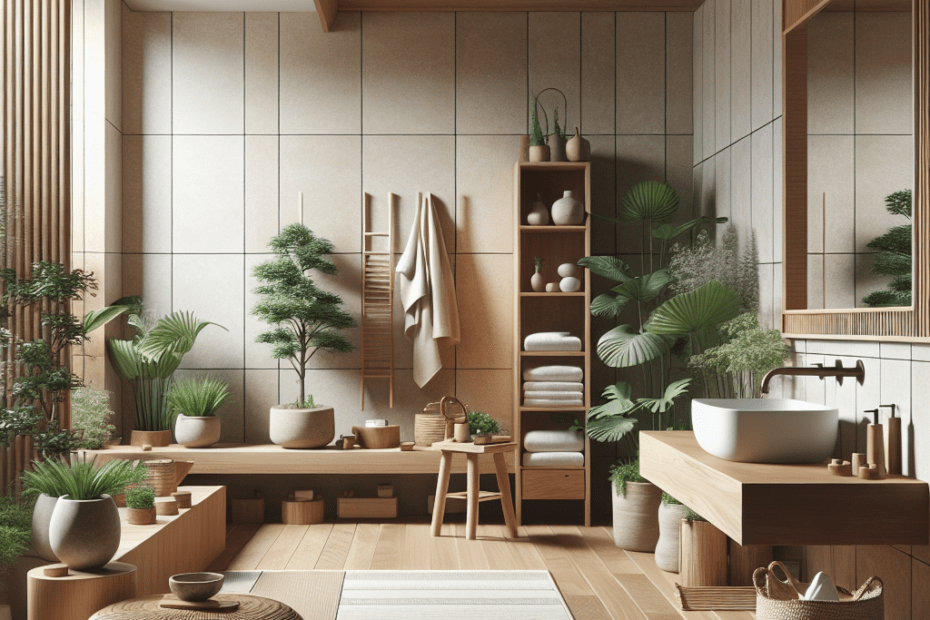“`html
Embracing Japandi: How to Style a Japandi-Inspired Bathroom
The hybrid design trend known as Japandi has taken the interior design world by storm in recent years. Merging the minimalist elegance of Japanese style with the warmth and comfort of Scandinavian design, this trend offers a serene and functional aesthetic. One room where this design can truly shine is the bathroom. As more people seek a tranquil space to unwind, applying Japandi principles ensures a perfect balance of simplicity and relaxation.
The Core Elements of Japandi Bathroom Design
To achieve a successful Japandi bathroom, it’s essential to integrate specific elements from both Japanese and Scandinavian styles. Here’s an outline of these core components:
| Japandi Element | Description |
|---|---|
| Minimalist Aesthetics | Simple, clutter-free spaces with clean lines. |
| Natural Materials | Use of wood, stone, and bamboo to bring nature indoors. |
| Neutral Colors | Pale hues and earthy tones to create a calm atmosphere. |
| Functionality | Practical design that emphasizes usability and space efficiency. |
| Hygge Elements | Touches of warmth and comfort, such as soft textiles. |
Steps to Design a Japandi Bathroom
Considering Japandi bathroom design for their home means creating a space that’s not only beautiful but also functional and inviting. Here are steps to incorporate this style:
1. Choose Appropriate Color Schemes
They should start with a neutral color palette, focusing on tones like beige, soft grey, and white. These colors act as a calming backdrop and can easily be complemented by natural materials.
2. Use Natural Materials
Embracing natural materials is crucial. Incorporate wood for vanity tops, bamboo for mats, and stone for countertops, which can blend perfectly with a neutral color base.
3. Focus on Minimalism
Minimalism is at the heart of the Japandi trend. Declutter the bathroom and only include items that are essential. Storage solutions such as built-in shelves can help keep spaces tidy.
4. Add Functional Elements
Japandi design emphasizes functionality. Opt for cabinetry that provides ample storage without appearing bulky. Consider integrating modern fixtures with clean lines and smart technology for a seamless look.
5. Introduce Warm Textiles
To introduce the hygge concept, they can add plush towels and soft bath rugs. Even a simple addition of a woven basket for storage can bring in warmth and texture.
6. Incorporate Complementary Decor
While Japandi leans towards minimalism, the right choice of decor can bring life to the bathroom. Imagine ceramic vases, minimalistic artwork, or a small bonsai plant for a touch of nature.
Benefits of Japandi Bathroom Design
The Japandi bathroom design is more than just aesthetic; it comes with a range of benefits:
- Promotes Relaxation: The serene environment created by this style helps reduce stress and promote relaxation.
- Environmentally Friendly: With a focus on using natural materials, it’s a great choice for those seeking sustainable design.
- Timeless Appeal: The clean and neutral aesthetic ensures the design won’t go out of style quickly.
Statistics Highlighting the Rising Trend
Japandi design is not just a passing trend. According to Homify, the popularity of Japandi has increased by 60% in the past two years, driven by homeowners seeking simplicity and tranquility in their spaces.
Key Takeaways
- Japandi style combines Japanese minimalism and Scandinavian comfort.
- Neutral colors, natural materials, and minimalist design are key elements.
- Focus on functionality and hygge to achieve a serene bathroom space.
- The trend emphasizes sustainability and timeless design.
FAQ
- What is Japandi design?
Japandi design is a fusion of Japanese and Scandinavian styles, emphasizing simplicity, functionality, and natural materials. - Why is Japandi becoming popular?
The style’s focus on minimalist aesthetics and tranquility resonates with those seeking stress-free living environments. - How can they make their bathroom more Japandi?
Incorporate natural materials, neutral colors, practical storage solutions, and minimalist decor to reflect Japandi principles. - Are there specific materials to use in a Japandi bathroom?
Yes, materials such as wood, stone, and bamboo are commonly used in Japandi bathrooms for their natural and calming qualities. - Can Japandi style be applied to small bathrooms?
Absolutely, Japandi’s emphasis on minimalism and functionality makes it ideal for maximizing the space in smaller bathrooms.
“`
